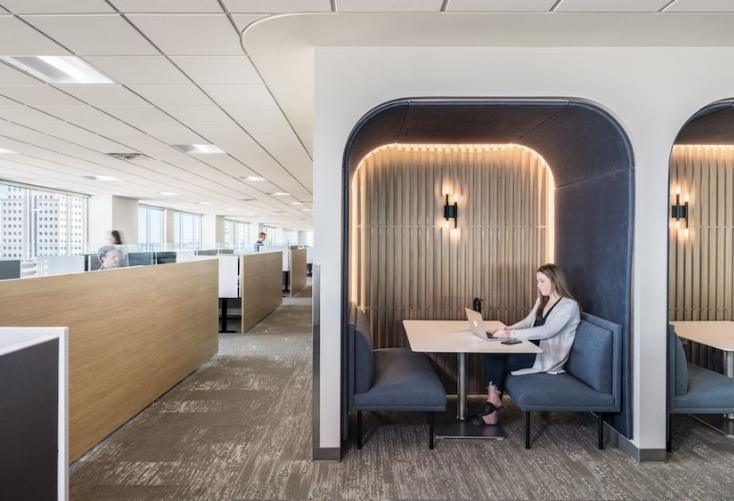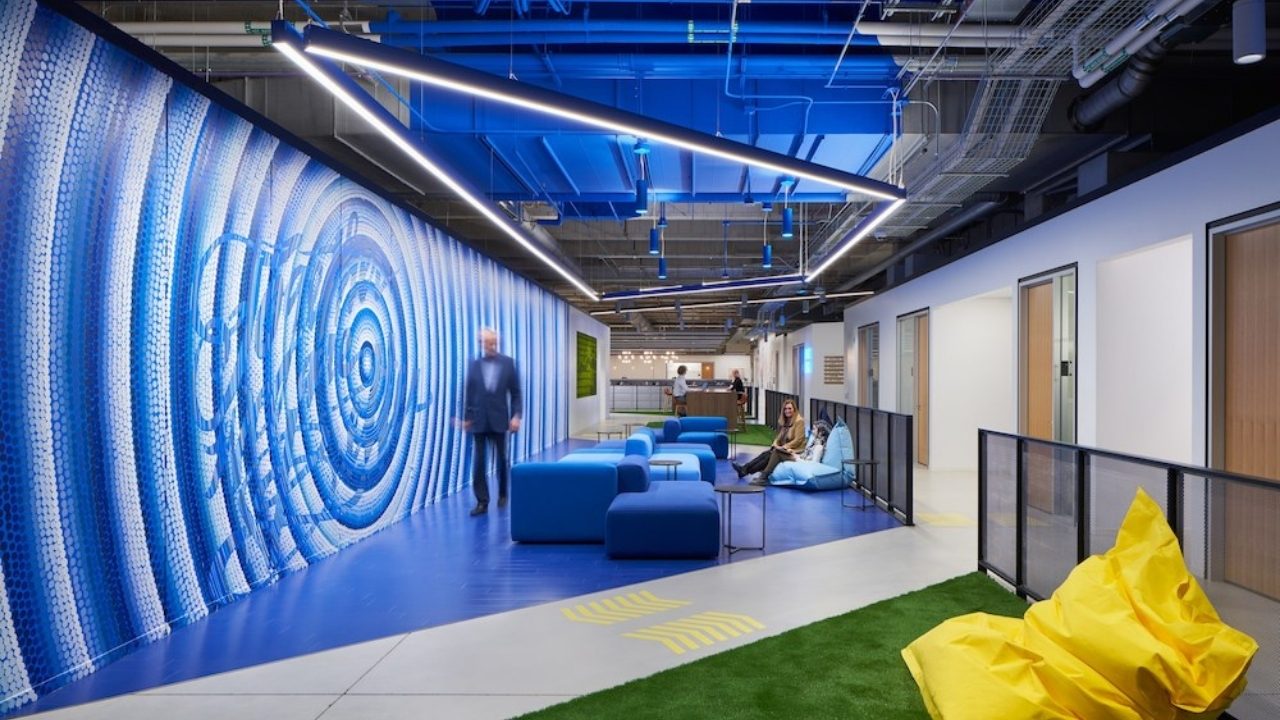- Employee burnout isn’t a new concept, but it’s now affecting more Americans who are seeing the same four walls every day as they work and live in the same space.
- There are ways a company can help reduce employee burnout and keep culture alive.
- Stantec’s Heidi Dunn shares how to prevent employee burnout and keep company culture alive with choice and design.
This article was written by Heidi Dunn and it was originally published on Work Design Magazine.
For the last 16+ months, we have all wondered what the return to the workplace might look like. We took surveys, read articles, listened to podcasts, and attended far too many virtual meetings to count. Now that return to work is beginning for some, how do we continue to keep a company culture alive and healthy when the office is only half full? And is there a way to reduce stress and avoid the employee burnout culture that has formed during our time at home?
People want to feel connected to a company by having a sense of purpose and place. While most of us were able to successfully make the shift to working from home, we missed out on those serendipitous interactions with our colleagues. Personal interactions were replaced with Zoom meeting after Zoom meeting. We feel the constant pressure to attend everything, which creates a new level of stress on the job. Employee burnout isn’t a new concept, but it’s now affecting more Americans who are seeing the same four walls every day as they work and live in the same space. Whether we are caring for our children, parents, or just ourselves, we have been trying to work and live and balance it all during a time that is anything but normal.

Feeling the burnout
We know what employee burnout is but what does it feel like? The feeling of mental and physical exhaustion from burnout can run deep and doesn’t go away quickly. Here are a few signs to look for:
- Losing track of tasks or not completing tasks on time
- Going through mood changes
- Feeling disconnected (even though we are always connected!)
- Feeling discouraged about work
- Restless or poor sleep
- Drinking more alcohol than normal
There are ways a company can help reduce employee burnout and keep culture alive: providing choice and employee empowerment, and the design of the physical environment.
Choice and employee empowerment
How a company embraces its culture, brand, and values has a visible impact on the business and employees. Smart design choices and a flexible working environment help a company attract and retain employees by giving them choices around their workspace and their schedules. These options create trust, autonomy, and wellness that ensure employees are healthier and happier at work. We may never be back in an office full time, but creative solutions to get employees to want to come back are important to consider.
Providing a workplace environment that gives people the choice on how to accomplish their day is quickly becoming the way of the future. In the office it is a blend of open and closed workspace that allows team members to utilize the best environment for that workday. Communal areas provide a place for people to recharge – an option necessary for both introverts and extroverts. Meeting spaces that range from traditional boardrooms to a lounge setting accommodate different types of meetings and participant preferences.
It is not just choice IN the physical workplace. It is also choice around when employees come into the office. Consider what a day in the life might be like, and how this alternative way of working could help reduce the stress of working all day and all night at home.
Through a combination of HR initiatives and careful planning, companies are finding ways to build choice and balance into their return to the office.
Design of the physical environment
When designing spaces for our clients, always start by discussing culture. It can be helpful to kick off projects with a visioning session where the company’s mission, vision, and values are discussed. Look for creative and functional ways to implement a company’s brand into the design. Office branding is important for reasons beyond promotional benefits. A well-designed and branded office environment supports company culture and helps to instill that sense of belonging and purpose into employees, both of which can affect job satisfaction, happiness, and motivation.
In order to create an inspirational environment focused on wellbeing factors such as colors, lighting, thermal comfort, and adjustability/flexibility of furnishings are all extremely important. When people work in drab, monotonous environments that do not provide them with any control over their space, workers are disengaged and dissatisfied. The opposite is true when work environments are aesthetically pleasing, fun, have a variety of settings, and offer users some control, resulting in more engaged and satisfied workers. Having a “fun” workplace doesn’t mean it has to have a slide or a ping-pong table.
The idea of wellness in the workplace through design could simply be providing an area of respite in a large open office. A space that integrates nature, sunlight, or fresh air. A place for an employee to unplug from those meetings and just connect with a colleague face to face.

Pushing past burnout
Workers will inevitably burnout if they are left with little time to focus on other aspects of their lives such as family, friends, and hobbies. Creating a work culture that encourages choice, flexibility, days off and vacation helps workers recharge and de-stress.
Employee burnout takes a huge toll on the health and productivity of an employee, creating a vicious circle that costs employers millions in loss of productivity. Employers, therefore, have a major role to play in reshaping the workplace dynamics to lower job stress and keep their workers healthy and more productive.
Will work – or the act of going back to the office – ever be ‘normal’ again? I am not sure that it will, and that is probably ok! Workers will return to the office to collaborate face to face, and for the sense of belonging and culture that an office space provides.


 Dr. Gleb Tsipursky – The Office Whisperer
Dr. Gleb Tsipursky – The Office Whisperer Nirit Cohen – WorkFutures
Nirit Cohen – WorkFutures Angela Howard – Culture Expert
Angela Howard – Culture Expert Drew Jones – Design & Innovation
Drew Jones – Design & Innovation Jonathan Price – CRE & Flex Expert
Jonathan Price – CRE & Flex Expert












